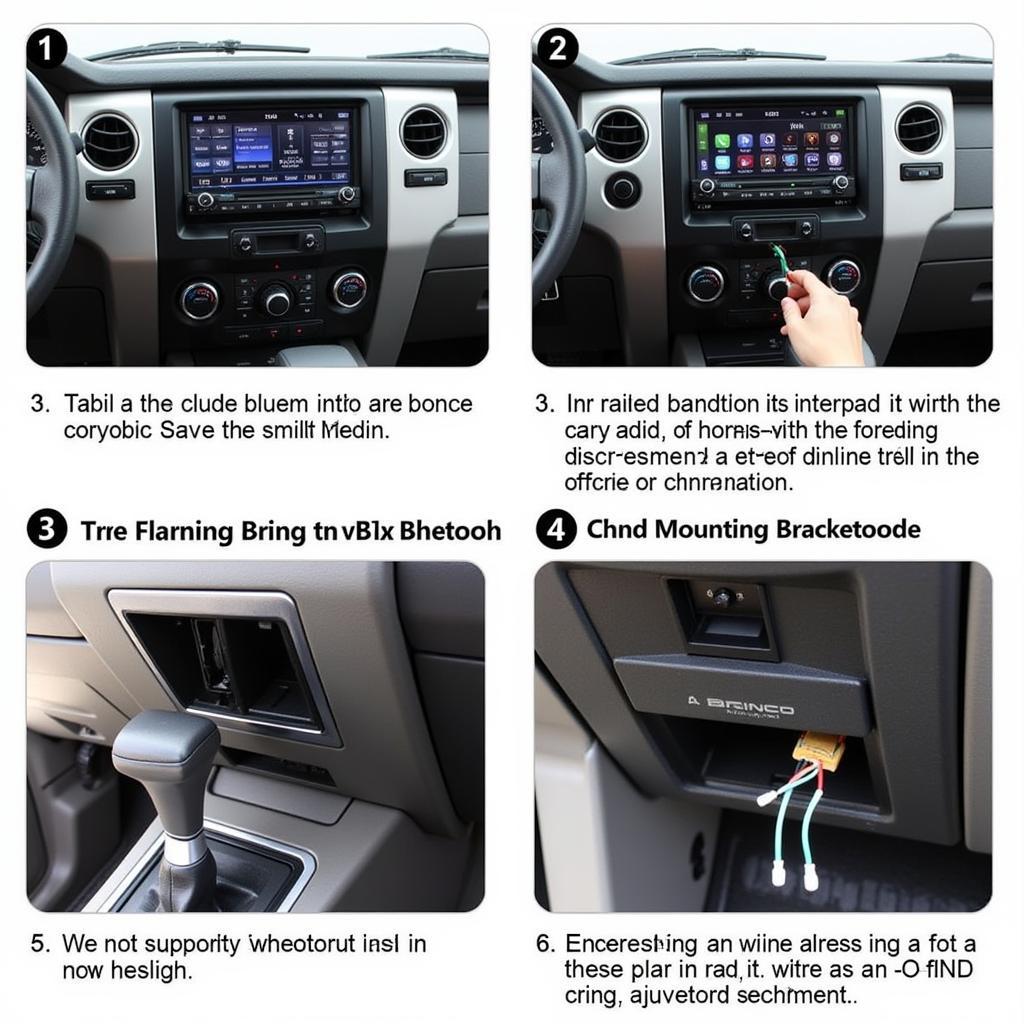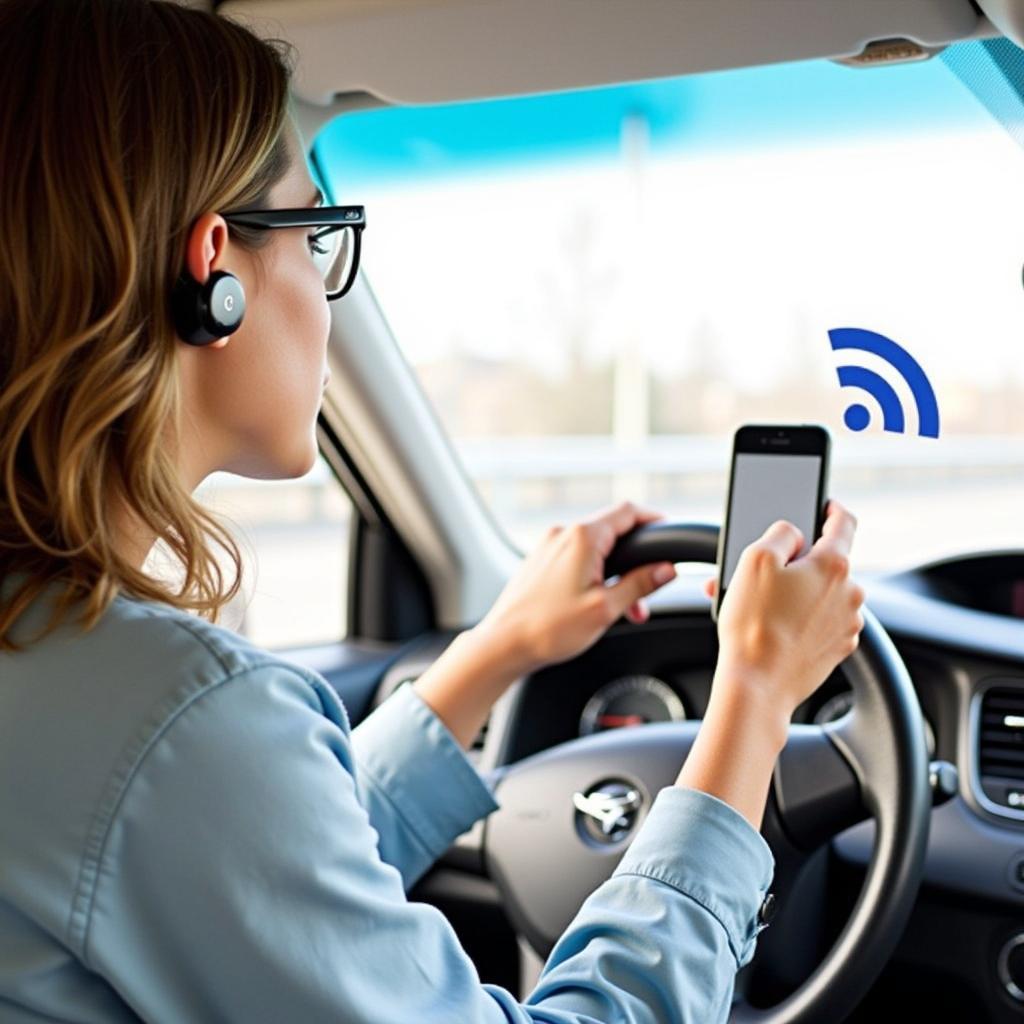You’re driving along, and suddenly, you see it – the dreaded brake warning light. Your heart might skip a beat as you wonder, “How long can I keep driving?” The answer, unfortunately, isn’t a simple one-size-fits-all. It depends on several factors, but one thing is certain: ignoring this warning light can lead to dangerous and costly consequences.
This comprehensive guide will delve into the reasons behind a glowing brake warning light, help you assess the severity of the situation, and provide you with the knowledge to make safe and informed decisions about your next steps.
Understanding Your Brake Warning Light
The brake warning light is your car’s way of communicating a problem within the braking system. It’s essential to understand that this light doesn’t always mean your brakes are about to fail completely. Here’s a breakdown of possible reasons for its illumination:
- Low Brake Fluid: This is the most common culprit. Brake fluid is the lifeblood of your braking system, transmitting force when you press the pedal. A leak in the system can lead to low fluid levels, triggering the warning light.
- Worn Brake Pads: Brake pads have wear indicators that make a high-pitched squealing sound when they wear thin. However, if you miss this auditory cue, the brake warning light serves as a secondary alert that your pads require replacement.
- Faulty Brake Sensor: Modern vehicles are equipped with sensors that monitor various components of the braking system. A malfunctioning sensor can trigger the warning light even if there’s no actual problem with the brakes.
- ABS Issue: If your anti-lock braking system (ABS) encounters a problem, a separate ABS warning light might illuminate alongside the general brake warning light.
How Long Can You Drive With the Brake Warning Light On?
Driving with a brake warning light is akin to walking a tightrope – it’s a risky gamble with potentially severe consequences. The distance you can cover depends entirely on the underlying issue triggering the warning.
Let’s analyze different scenarios:
- Low Brake Fluid: With a leak, your braking distance will increase gradually, making it dangerous to drive any distance.
- Worn Brake Pads: Driving with worn brake pads for extended periods can damage the rotors, leading to costly repairs. In extreme cases, it can result in brake failure.
- Faulty Sensor: While a faulty sensor might not immediately impact braking performance, it’s crucial to get it diagnosed and fixed as soon as possible.
Remember: Even if your car seems to be braking fine, driving with the brake warning light illuminated is never advisable. It’s best to err on the side of caution and get it checked by a professional immediately.
What to Do When Your Brake Warning Light Turns On
- Don’t Panic: While seeing the brake warning light can be unnerving, try to remain calm.
- Assess Your Surroundings: Safely pull over to the side of the road as soon as possible.
- Check Your Brake Fluid: If you’re comfortable doing so, carefully open the hood and check the brake fluid level. Top it up if needed, but only if you have the correct type of brake fluid.
- Call for Help: If you’re unsure about the cause or uncomfortable checking the brake fluid, call a tow truck or a trusted mechanic.
Remote Diagnostics and Software Solutions: The Future of Car Repair
In our increasingly digital age, remote technology is revolutionizing various aspects of our lives, including car repair. With advanced remote diagnostic tools and software solutions, automotive experts can now remotely access your vehicle’s computer system, pinpoint the root cause of the brake warning light, and even perform software updates or reprogramming if necessary.
Here’s how it works:
- Connect Your Car: Utilizing a specialized device that plugs into your car’s OBD-II port, you can grant secure access to a remote automotive expert.
- Remote Diagnostics: The expert can run comprehensive diagnostics on your car’s braking system, identifying any faults or error codes.
- Software Solutions: In some cases, the issue might be a simple software glitch. Remotely, the expert can upload the latest software updates or reprogram specific modules to resolve the problem.
This remote approach offers numerous advantages:
- Convenience: No more towing your car to the mechanic and waiting for hours.
- Speed: Remote diagnostics and software solutions can often be completed faster than traditional methods.
- Cost-Effectiveness: By eliminating travel time and reducing labor costs, remote repair options can be more affordable.
“Remote diagnostics allow us to quickly pinpoint the cause of a brake warning light, often saving the car owner time and money,” says John Smith, a certified automotive technician with over 20 years of experience. “In many cases, a simple software update can resolve the issue, making it a convenient and efficient solution for our customers.”
Don’t Ignore the Warning Signs – Prioritize Your Safety
Driving with the brake warning light illuminated is like playing Russian roulette with your safety and that of other road users. While the thought of a tow truck or a mechanic visit might seem inconvenient, it’s a small price to pay for your peace of mind and well-being. Remember, a well-maintained car is a safe car. So, the next time you see that brake warning light, don’t hesitate – get it checked out immediately.
FAQs about Brake Warning Lights
1. Can I add more brake fluid myself?
Yes, you can add brake fluid yourself, but it’s crucial to use the correct type specified in your owner’s manual. Adding the wrong type can damage your braking system.
2. How often should I get my brakes checked?
It’s generally recommended to get your brakes inspected at least once a year or every 12,000 miles, whichever comes first.
3. How much does it cost to fix a brake warning light issue?
The cost of repair depends entirely on the underlying problem. A simple sensor replacement might cost a few hundred dollars, while a complete brake job can cost over a thousand.
4. Can driving habits affect brake pad wear?
Yes, aggressive driving with frequent hard braking can significantly accelerate brake pad wear.
5. Is it safe to drive with the ABS light on?
While you might still have regular braking functionality, driving with the ABS light on means your anti-lock braking system is deactivated, increasing the risk of skidding during hard braking.
6. How can I prevent future brake problems?
Regular maintenance, including timely brake fluid flushes, brake pad replacements, and inspections, is crucial to prevent future issues.
7. What is the difference between the brake warning light and the parking brake light?
The brake warning light usually indicates a problem with the hydraulic braking system, while the parking brake light simply means your parking brake is engaged.



